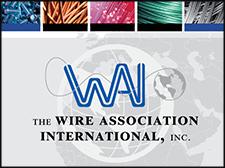Understanding the Intersection of Product Traceability and Anti-Counterfeiting with Hologram Solutions
Discover how hologram solutions and product traceability work together to combat counterfeiting. Learn how industries like pharmaceuticals, luxury goods, and electronics leverage advanced holographic security for authentication, regulatory compliance, and supply chain transparency.
Counterfeiting is a global menace that impacts industries ranging from pharmaceuticals to electronics and luxury goods. As counterfeiters become more sophisticated, businesses and regulators must adopt advanced security measures to protect products and consumers. One such revolutionary approach is the integration of hologram solutions with product traceability systems.
Holograms are no longer just visual deterrents; they have evolved into technologically advanced tools that work alongside digital traceability mechanisms to ensure authenticity, transparency, and consumer trust. In this article, we will explore how hologram solutions intersect with product traceability to form a powerful defence against counterfeiting.
The Role of Product Traceability in Anti-Counterfeiting
Defining Product Traceability
Product traceability refers to the ability to track and trace a product's journey across the supply chain, from manufacturing to final consumption. It allows brands and regulators to identify where a product was made, how it was distributed, and whether it has been altered or counterfeited.
A robust traceability system consists of unique identifiers such as serial numbers, QR codes, RFID, and NFC tags. Digital databases, including blockchain or cloud-based storage, ensure immutable records of product movements. Real-time monitoring through sensors and IoT-enabled tracking provides supply chain visibility, mitigating risks, ensuring regulatory compliance, and fostering consumer confidence.
How Traceability Helps Combat Counterfeiting
Traceability enables authentication by allowing consumers and retailers to verify the legitimacy of a product through QR codes or holographic labels. It enhances supply chain transparency by identifying weak links where counterfeit products may enter. It also facilitates rapid product recalls by quickly identifying and removing counterfeit or defective items from the market. Compliance with global regulatory standards such as the EU's Digital Product Passport and the US FDA's Drug Supply Chain Security Act further strengthens its significance. Given that counterfeiting causes global losses exceeding $500 billion annually, product traceability is essential.
Hologram Solutions: A Critical Layer of Security
Evolution of Holograms in Brand Protection
Holographic technology has advanced from simple 2D visual effects to sophisticated multi-layered security solutions integrating digital authentication methods. Modern holograms include tamper-evident features that destroy upon removal, micro text and nano-optical elements visible only under magnification, dynamic colour-shifting and kinetic effects that are difficult to replicate, and QR codes or NFC chips linking to digital traceability systems for real-time authentication.
How Holograms Enhance Anti-Counterfeiting Measures
Hologram solutions provide a dual-layered security mechanism by offering both physical and digital verification methods. They enable visual authentication, allowing consumers, customs officials, and retailers to instantly verify authenticity without additional tools. The integration of holograms with blockchain and IoT ensures immutable product history records, real-time tracking of product movements, and consumer engagement through authentication apps. Holographic labels combined with serialization also prevent unauthorized product diversion by tracking genuine products and detecting grey-market activities.
Industries Benefiting from Hologram-Based Traceability
Several industries rely on hologram-based traceability, including pharmaceuticals for preventing counterfeit drugs, luxury goods and fashion for protecting high-value items, automotive and electronics for ensuring genuine components reach consumers, food and beverages for tracking organic and speciality items, and government agencies for securing documents such as passports and licenses.
Learn more about supply chain traceability at https://acviss.com/origin/
The Future of Hologram-Based Anti-Counterfeiting
Advancements in Smart Holograms
Next-generation smart holograms will revolutionize brand protection through AI-powered authentication systems, augmented reality holograms that enable interactive verification, and biometric-linked holograms incorporating fingerprints or facial recognition for enhanced security.
Regulatory Implications and Global Standards
With governments tightening anti-counterfeiting regulations, brands must ensure compliance with standards such as the EU Digital Product Passport, FDA Drug Supply Chain Security Act, ISO 12931 for brand protection, and GS1 standards for supply chain traceability. Businesses that fail to integrate secure hologram and traceability systems risk regulatory fines, brand damage, and loss of consumer trust.
Why Hologram-Based Traceability is the Future
The intersection of product traceability and hologram solutions is shaping the future of anti-counterfeiting. By combining physical security features with digital tracking capabilities, brands can create an impenetrable defence against counterfeiting while improving supply chain efficiency and consumer trust.
Acviss, a leader in brand protection, offers cutting-edge hologram and traceability solutions that empower businesses to safeguard their products in an increasingly counterfeit-driven market. To learn more about how Acviss can help secure your brand, connect with us today.
Featured Product

